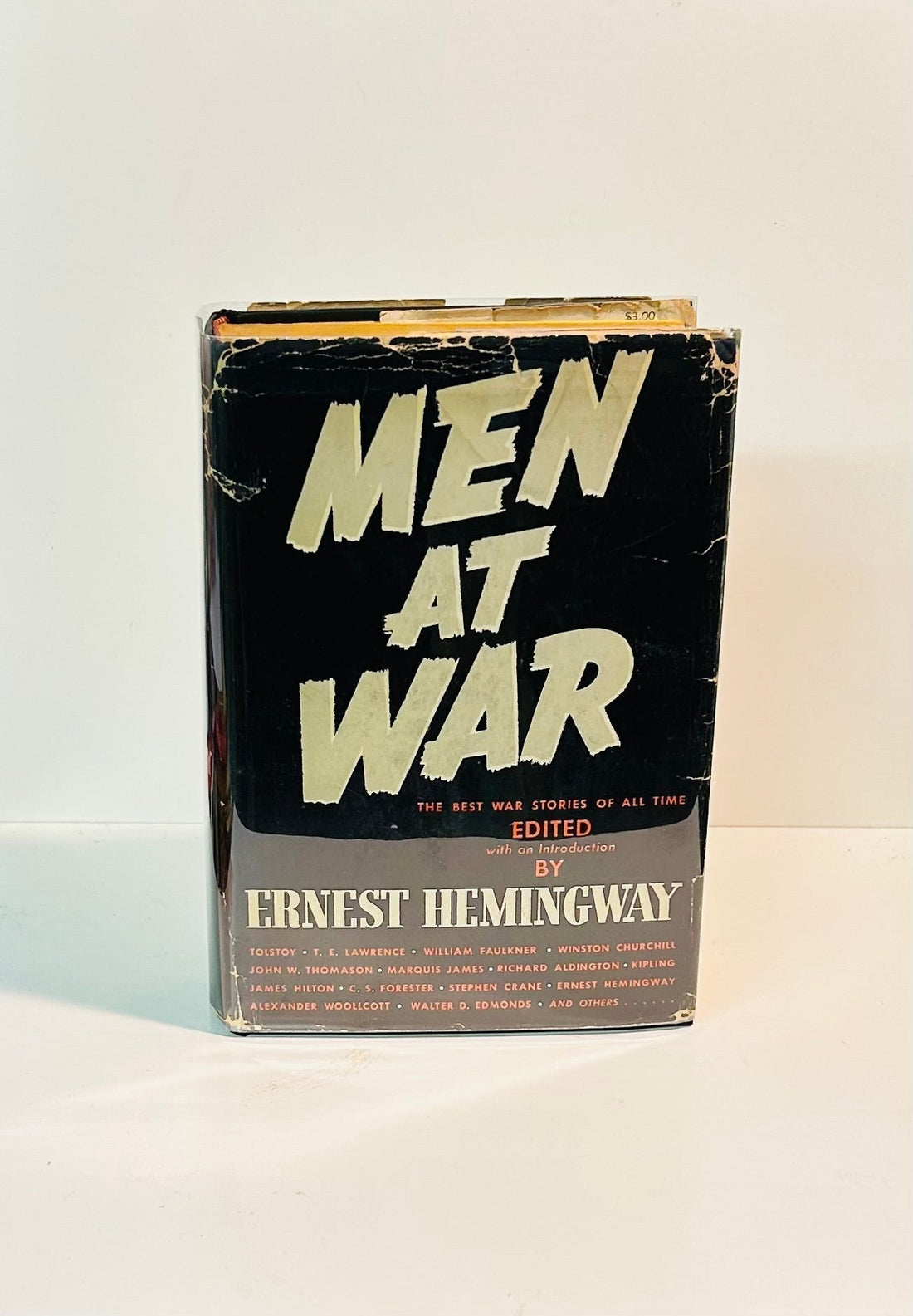
Beyond the Pen: Rare Hemingway Book Introductions and Testimonials Collectors Crave
Teilen
When most readers think of Ernest Hemingway, they imagine his iconic novels like The Old Man and the Sea, A Farewell to Arms, or For Whom the Bell Tolls. But beyond his own literary canon, Hemingway also left his mark on numerous other works—as an editor, introducer, and even as a blurb-writer on book covers. For collectors and literary historians, these lesser-known Hemingway contributions are coveted artifacts that tell a broader story of his literary influence.
Men at War (1942): Hemingway the Editor
One of Hemingway's most substantial editorial undertakings was Men at War: The Best War Stories of All Time, published in 1942. Hemingway selected and edited the stories himself and wrote an extensive 3,000-word introduction for the anthology. He called it "the only book of this sort that I am qualified to edit," reflecting both his deep interest in war literature and his personal experience as a war correspondent and veteran.
In his introduction, Hemingway doesn't just set the stage for the stories; he offers a philosophical exploration of war, courage, and storytelling. The collection includes works by Stephen Crane, Leo Tolstoy, and others, curated with Hemingway’s distinctive taste for realism and grit. This book is a cornerstone item for Hemingway completists.
Hemingway’s Introductions: Brief But Powerful
Hemingway lent his name and literary gravitas to other works via introductions, prefaces, and forewords—often brief, but always valuable for collectors:
-
William Faulkner's Soldiers' Pay (Modern Library Edition, 1949): Hemingway penned a short endorsement praising Faulkner’s talent, despite their famously frosty relationship.
-
E.E. Cummings' EIMI: Though not an introduction per se, Hemingway praised the book publicly and in correspondence, helping revive interest in Cummings' experimental prose.
-
Treasury for the Free World (1946): This anthology, edited by Ben Raeburn, includes a Hemingway contribution titled On the American Dead in Spain, originally a eulogy, but reprinted here as part of a postwar cultural collection.
Hemingway's Testimonials: Book Blurbs as Collector's Gold
Equally valuable to collectors are books that feature testimonials or blurbs by Hemingway on their dust jackets or advertisements. These quotes are often short—sometimes just a sentence—but their rarity makes them highly collectible:
-
James Jones’ From Here to Eternity (1951): Hemingway famously said, “This is a book about the things men do in war and in peace. It is a very fine book.”
-
John Hersey’s Into the Valley (1943): Hemingway praised Hersey's realism and storytelling, helping validate the young journalist’s work.
-
Irwin Shaw’s The Young Lions (1948): Hemingway provided a comment emphasizing Shaw’s honest depiction of war.
-
Norman Mailer’s The Naked and the Dead (1948): Although sometimes disputed, Hemingway was quoted in marketing materials praising Mailer’s debut novel.
These quotes often appeared in first editions or early dust jackets and are particularly prized by collectors who specialize in Hemingway ephemera.
Why Collectors Care
For collectors, these editorial and testimonial contributions offer something rare: Hemingway’s voice outside his fiction. They reveal his views on contemporary writers, his editorial instincts, and his endorsement power in mid-20th-century literature. First editions featuring his name—even in a blurb—can fetch high prices, especially if they include dust jackets or original promotional materials.
Final Word
Ernest Hemingway’s literary presence goes far beyond his novels. From editing war anthologies to championing fellow writers through blurbs and introductions, Hemingway shaped American literary culture in quiet, yet influential ways. For collectors, these contributions offer rare windows into the writer’s broader legacy—and a chance to hold a piece of that history.
